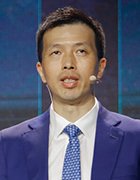
vegefox.com - stock.adobe.com
MWC 2023: Huawei chooses not to choose on network energy efficiency
Comms tech firm rebuts assumed binary choice in comms arena and assures simultaneous green ICT and ICT development is possible if the right balance is struck between energy efficiency, renewable energy utilisation and user experience
As they adopt better ICT infrastructures to reap benefits and opportunities, firms face a delicate balancing act as the higher bandwidth and increased computing power required to support applications such as artificial intelligence (AI) are leading to a rapid increase in network energy consumption.
For Huawei, however, this dichotomy need not be faced. The comms tech provider has launched a Green 1-2-3 Solution to pave the way for the green development of ICT infrastructure networks.
Giving a keynote at Huawei’s Green ICT Summit just before MWC 2023, Peng Song, Huawei president of ICT strategy and marketing, noted the equivalent of an AI “big bang” was underway. Yet he pointed out that both green ICT and ICT development was possible if the right balance could be struck between energy efficiency, renewable energy utilisation and user experience.
“The ICT industry seems to be faced with the tough choice to either go green or develop. However, we believe the industry can choose not to choose, and instead go green and develop simultaneously,” he said.
Huawei’s green tech solution designed to help pave the way for the green development of ICT infrastructure networks was based on the three pillars.

“The ICT industry seems to be faced with the tough choice to either go green or develop. However, we believe the industry can choose not to choose, and instead go green and develop simultaneously”
Peng Song, Huawei
In terms of energy efficiency, Huawei’s Green 1-2-3 Solution advocates widening the focus from improving network energy efficiency to also reducing absolute energy consumption.
In light-load scenarios, it said multidimensional shutdown technology could be employed to enable intelligent shutdown across different dimensions, such as frequency, time, channel and power.
In “ultra-light-load” scenarios, meanwhile, equipment can be put into a deep dormancy mode. For example, new materials and processes can be used to solve condensation and low-temperature issues when active antenna unit (AAU) hardware shuts down. This enables the power module to independently remain on standby, so the power consumption of the AAU during extremely light load can be reduced from 300W to less than 10W.
As regards renewable energy, Huawei called for a focused expansion, from deploying green power at scale to the efficient use of renewable energy.
The company claimed an upgrade from network-specific policies to site-specific policies could be undertaken to improve the accuracy of renewable energy deployment. Additionally, it calculated that the time required for intelligent scheduling could be reduced from days to minutes, thus maximising the economic and environmental benefits of renewable energy.
Multidimensional site information such as weather, electricity price, battery status and service volume can be obtained, and intelligent scheduling algorithms can maximise power-generation efficiency and load-based power availability, while minimising overall power cost.
Significantly, Huawei suggested the conversation and focus on sustainability should no longer focus solely on network energy saving and key performance indicator (KPI) assurance, but also on user experience assurance. It said optimal energy-saving policies could be adopted according to different network scenarios. For example, in low-traffic scenarios, basic network KPIs could be guaranteed to maximise energy savings, while user experience is guaranteed in high-traffic scenarios.
In addition, the company believed experience-driven approaches were being upgraded to data-driven approaches, allowing energy-saving policies to be generated in minutes and optimisation policies to be delivered in milliseconds.
Concluding, Peng emphasised Huawei’s willingness to work with operators worldwide to strike a balance between going green and development to accelerate green ICT development. These partners include China Broadnet, Orange, MTN Group and China Telecom, whose representatives joined Peng on stage at the keynote.
“To achieve three advancements, we should have a set of standardised indicators and create a visible manageable operation and maintenance system for [improving] operations. We have worked with multiple carriers and vendors and world alliances to promote the standardisation of green indicators,” he remarked.
“Next, we’re going to work with our carrier customers to use tools for these three indicators to be visible, manageable and also optimised during the journey of network operation. To conclude, in the ICT industry, we should choose not to choose between green and development. We certainly can pursue both of them together.”
Read more about energy-efficient communications
- EE takes AIR for greater energy efficiency in revamped 5G radio net: BT Group mobile division deploys Swedish comms tech provider’s Massive MIMO radio equipment across key UK sites, accelerating 5G deployment.
- Next gen of current next-gen mobile targeted to flourish from 2025-2030, helping 5G commercialisation, long-term development of AI, machine learning and network energy savings for a fully automated network.
- Chinese comms tech provider Huawei launches all-band 5G series, said to be a new concept in next-generation mobile communications with set of sustainable solutions designed to facilitate the evolution of all bands to 5G infrastructure.
- Swedish comms tech provider makes further inroads into more sustainable networks with the introduction of a new triple-band, tri-sector radio that is said to be able to do the job of nine radios.








